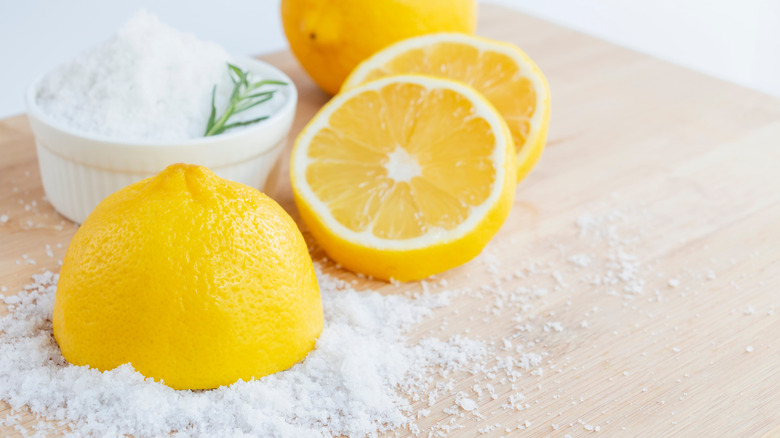David Tanis On How To Get The Most Out Of Seasonal Veggies - Exclusive
When it comes to inspiration for his menu at Lulu, the Los Angeles farm-to-table restaurant housed in UCLA's Hammer Museum, Chef David Tanis looks no further than what's fresh at the farmers' market.
"When the actual produce comes in, it's enough inspiration to do lots of things," he told Tasting Table in an exclusive interview. "I'm there looking for what is the freshest and the most enticing ... It's going to the market, seeing the vegetables, doing a little talking with the farmers, tasting things — that gets the juices going and helps you determine what you want to put on the menu."
In his New York Times column, Tanis offers home cooks a monthly seasonal menu to prepare for friends and family. As ever, he admonishes them to keep things simple, source the freshest ingredients, and allow them to speak for themselves.
"Most [home cooks] have become accustomed to commodity produce. The red peppers that you buy in the supermarket that came from Holland are going to be beautiful, but they're not necessarily going to have any flavor." When cooking with supermarket produce, says Tanis, you need to add lots of salt and spices to try and coax some flavor out of bland, factory-farmed veggies.
"With market cooking," he explained, "you're always getting something that is super fresh, which means it has a lot of flavor already. The idea is not to get in the way of the flavor, not to disguise it, but to enhance it somehow."
David Tanis has made his career amplifying what's inherently delicious in fresh, seasonal produce. Through his columns, cookbooks, and restaurant menus, he relies on the same simple fundamentals to bring out the best in the stunning vegetables he sources.
Finding balance with salt and acid
Every year as the seasons turn over, David Tanis is perennially eager to unearth something novel in the familiar. "You're always figuring out a new way to cook something that you've already cooked a hundred times," he said. "Or you're discovering how really delicious something is that you haven't tasted in a year."
To make the most out of each season's bounty, Tanis maintains that simplicity is the best approach.
"Taste your food," he advised. "Taste it along the way so you know where you're going before you get to the end. Does it taste good? What does it need? Does it need another pinch of salt? Does it need a little acid? Those are probably the two things that might need adjusting."
"To bring out the flavor in your dish," Tanis continued, "you have to add salt early on, and you have to add salt several times throughout the process of whatever it is you're cooking."
When used at the right time and in the proper quantities, salt reveals rich umami notes in roasted veggies, makes sweet fruits pop, and mellows bitterness in cruciferous veggies like broccoli, radishes, and Brussels sprouts.
As for brightening up a dish, "Sometimes, a simple thing like a few drops of lemon juice can really make a huge difference," said Tanis, "and not lemon juice that was squeezed yesterday, but straight out of the lemon, or a little bit of lemon zest." Adding a dash of citrus or vinegar to finish your dish cuts through fatty components like olive oil or butter, and brings the natural flavors found in seasonal produce into sharper focus.
Experience Chef Tanis' menu at Lulu Restaurant, located inside the Hammer Museum in Los Angeles. Visit their website to view the menu and book your reservation.

